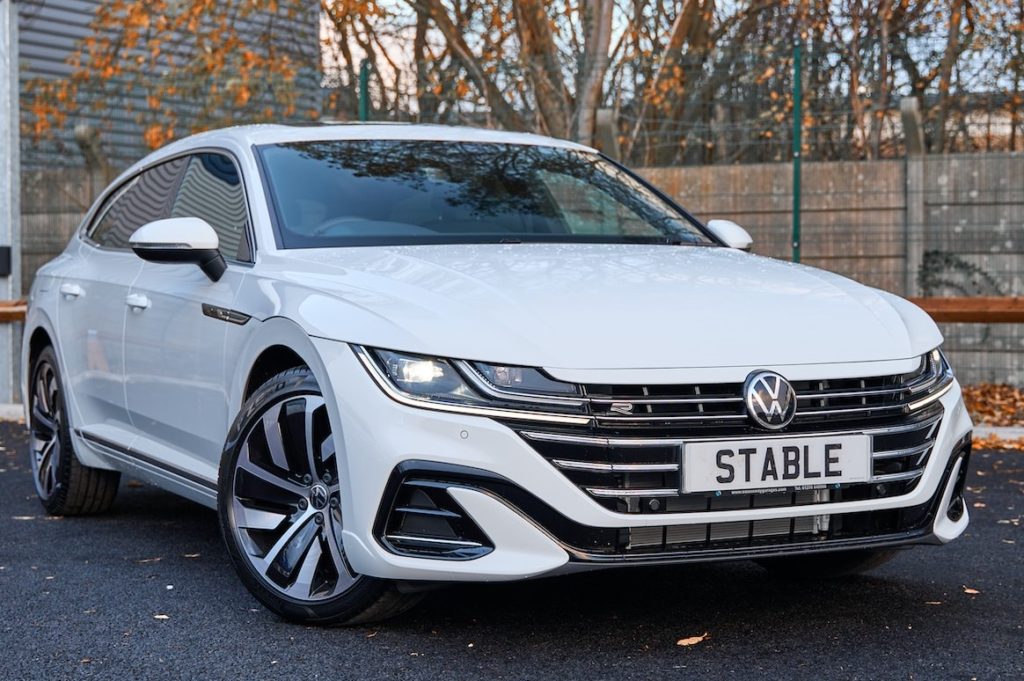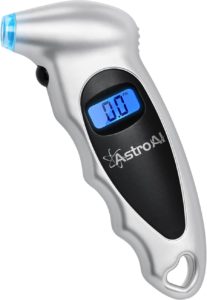Volkswagen Arteon Tire Pressure Monitoring system Description
The Volkswagen Arteon’s indirect tire pressure monitoring system (TPMS) plays a crucial role in keeping you safe on the road by keeping an eye on your tire pressure. By using the car’s anti-lock braking system (ABS) and wheel speed sensors, the TPMS detects potential tire pressure issues by observing changes in wheel rotation speeds. Its main goal is to promote top-notch tire performance, boost fuel efficiency, and preserve overall vehicle safety, all by keeping the driver informed about the tire pressure levels. Continue reading below to find out how to reset your VW Arteon tire pressure light, when it’s necessary to reset it, and the reasons behind the light turning on!
How to Reset Volkswagen Arteon Tire Pressure Warning Light:
Fill the tires to the recommended pressures. (found on the driver side door jamb, yellow sticker)
Turn the vehicle to the ON position or have the vehicle running.
Select the CAR button.
Select SETTINGS.
Select TIRES.
Select SET under “tire pressure monitoring system”.
Select CONFIRM.
Drive your Volkswagen Arteon!
TIP: If the tire light won’t go off after following these steps, double check all your tires and follow the reset procedure again.
How Does the Volkswagen Arteon Tire Pressure Monitoring System Work?
The Volkswagen Arteon TPMS works by using the vehicle’s existing sensors to monitor tire pressure. Here’s how it works:
• Utilizing ABS and wheel speed sensors: Indirect TPMS relies on the anti-lock braking system (ABS) and its wheel speed sensors to monitor tire pressure.
• Monitoring wheel rotation speeds: The system measures each wheel’s rotation speed to detect potential tire pressure issues.
• Identifying discrepancies: The vehicle’s onboard computer compares the rotation speeds of all the wheels, searching for any inconsistencies that might indicate changes in tire pressure.
• Detecting pressure changes: When tire pressure changes, it impacts the tire’s rolling circumference, which in turn influences wheel rotation speeds. This is how the TPMS identifies fluctuations in tire pressure.
• Alerting the driver: If a significant difference in wheel rotation speeds is found, the onboard computer triggers a dashboard warning light to notify the driver of a possible tire pressure issue.
In other words, the Volkswagen Arteon uses sensors that measure how fast each wheel is going and tells the car’s computer if something seems wrong. If there’s a problem, a warning light on the dashboard will let you know to check your tires.
What Happens When Tires are Underinflated?
When the tires of your Volkswagen Arteon are underinflated, the car’s overall performance and safety will be negatively impacted. The insufficient air pressure causes the tires’ contact area with the road to increase, leading to uneven tire wear and reduced fuel efficiency. Additionally, the handling and stability of the vehicle may be compromised. This makes it harder to maintain control, especially during sudden maneuvers or in bad driving conditions. Furthermore, underinflated tires are more susceptible to overheating and damage, increasing the risk of tire failure and potential accidents.
What will Cause a Low Pressure Tire Light in a Volkswagen Arteon?
• Insufficient tire pressure: when one or more tires lack the necessary air pressure.
• Tire leakage: A puncture resulting from sharp objects such as nails or screws, penetrating the tire.
• Temperature fluctuations: Tire pressure often decreases in cold weather, frequently activating tire pressure warning lights. This is the most common reason for tire pressure lights to come on.
• Wheel alignment issues: Misaligned wheels can interfere with tire pressure monitoring.
• Malfunctioning ABS sensors: A faulty ABS sensor will trigger false tire pressure warnings.
• Defective wheel speed sensor: A damaged speed sensor will cause tire warning lights to illuminate.
• Incompatible tire replacement: Using new or mismatched tires can cause problems. Always use OEM-sized tires.
• Wheel damage: Bent or cracked wheels can affect tire pressure readings.
• TPMS recalibration: The system may require resetting or recalibration after adjusting tire pressure.
• Wiring problems: Issues with the ABS or wheel speed sensor wires or connectors.
• Temporary spare tire: Driving with a “donut” or temporary spare tire installed.
• Drained vehicle battery: A dead battery that has been replaced or recently jump-started.
When to Recalibrate the TPMS in VW Arteon?
• After inflating or adjusting tire pressure
• After tire rotation
• After replacing tires
• After wheel alignments
• After seasonal temperature changes
• After repairing or replacing a faulty ABS or wheel speed sensor
• If the TPMS warning light stays on despite resolving tire pressure issues
• Manufacturer’s recommendation
• After Major suspension work
TIP: Be sure to check all tire pressures before recalibrating the tire pressure system regardless of the reason or cause.
VW Arteon Tire Maintenance
Make sure to adjust tire pressure when the tires are cold! Temperature fluctuations greatly affect tire pressure. Cold tires typically display lower pressure due to tire contraction, while warm tires show higher pressure as a result of expansion. Volkswagen’s suggested tire pressure levels are determined using cold tire measurements. This means that inflating warm or hot tires can result in over-inflation, increasing the likelihood of an unexpected tire blowout or rapid tire tread wear. In summary, always check tire pressure when the tires are cold, either prior to driving or after the vehicle has been stationary for a considerable amount of time.
Please note that this blog post contains Amazon affiliate links. This means that if you make a purchase through one of these links, the author of the blog may earn a small commission at no extra cost to you. The author only recommends products that they personally use and believe in. Thank you for supporting this blog.



